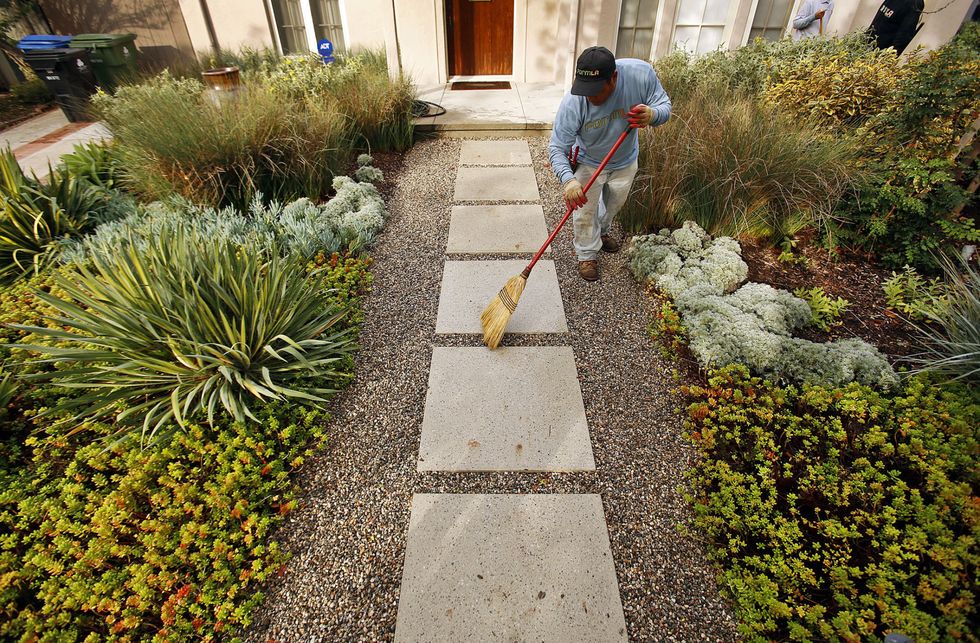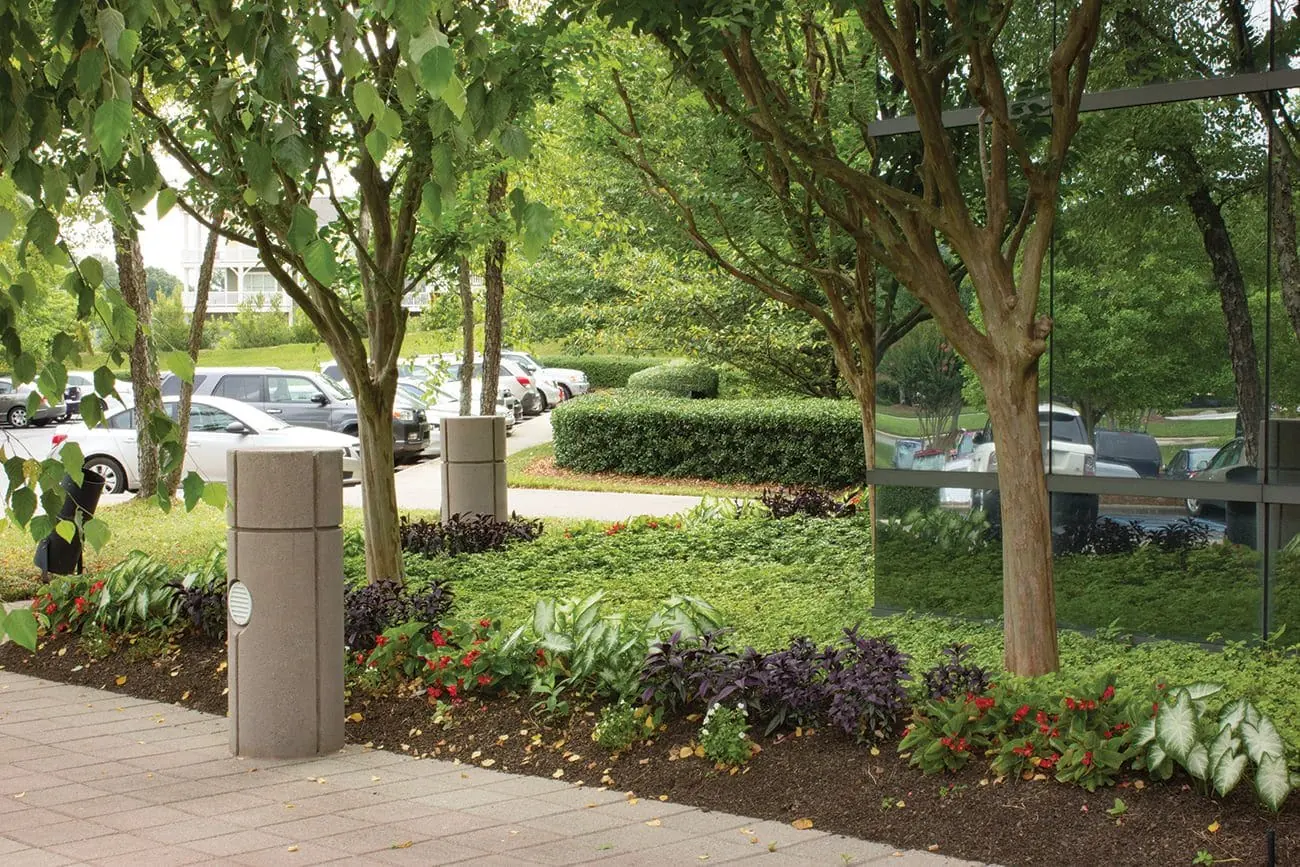Trusted Landscaping Company Jacksonville: Top Quality Landscaping Providers for Your Home
Trusted Landscaping Company Jacksonville: Top Quality Landscaping Providers for Your Home
Blog Article
Elevate Your Residential property's Aesthetic With Lasting Landscaping Layouts and Eco-Friendly Practices

Advantages of Sustainable Landscape Design
Executing sustainable landscape design methods not only saves natural sources however additionally advertises biodiversity and improves general environmental health and wellness. One significant benefit is the decrease of water usage through the use of drought-resistant plants, rain gardens, and effective watering systems.
Moreover, lasting landscaping can enhance soil wellness by reducing making use of chemical plant foods and chemicals, thus developing a healthier atmosphere for plant development and advantageous soil organisms. This, consequently, enhances the overall strength of the landscape to stand up to environmental stressors and climate modification effects - lawn cleanup Jacksonville. Additionally, lasting landscape design techniques can attract varied wildlife, including pollinators like butterflies and , cultivating a more lively and balanced ecosystem within the property
Incorporating Indigenous Plants
To build on the benefits of lasting landscape design, a calculated concentrate on incorporating indigenous plants can even more improve environmental resilience and promote biodiversity within the landscape. Indigenous plants are species that naturally occur in a certain area and have actually evolved to prosper in the neighborhood climate, soil problems, and ecological community. By including native plants in landscape design designs, property proprietors can decrease water use, reduce the requirement for chemical pesticides and plant foods, and sustain the regional wild animals population.
Integrating native plants additionally aids in protecting the one-of-a-kind character and identity of an area's plants. These plants commonly require much less upkeep once established, making them a cost-effective and lasting landscaping option over time. Additionally, indigenous plants can draw in native pollinators like butterflies and , contributing to the overall health and wellness of the ecological community.
When picking indigenous plants for landscaping tasks, it is important to choose varieties that are appropriate to the specific ecological problems of the site. Consulting with herb yards or neighborhood nurseries can give beneficial guidance on picking the best indigenous plants for a particular location. By incorporating native plants right into landscape design styles, residential property owners can create attractive, sustainable outdoor spaces that benefit both the atmosphere and the area.

Water Preservation Methods
Efficient irrigation methods play an important function in sustainable landscape design techniques, making sure ideal water conservation initiatives in outside spaces. Executing strategies such as drip watering, rainwater harvesting, and smart irrigation systems can dramatically decrease water wastefulness while keeping a healthy and balanced landscape. Trickle watering supplies water straight to the roots of plants, lessening evaporation and overflow. Rain harvesting includes gathering rainwater from roof coverings and storing it for later usage in irrigation, reducing the dependence on municipal water sources. Smart watering systems utilize climate data and dirt wetness levels to adjust watering timetables, stopping overwatering and advertising water performance.
In enhancement to advanced watering techniques, xeriscaping is one more water-saving landscape design method that focuses on utilizing drought-resistant plants, compost, and reliable watering to create a low-water landscape design - bush removal Jacksonville. By choosing indigenous plants that are fit to the local environment and dirt problems, residential or commercial property proprietors can decrease the demand for extreme watering, ultimately saving water and advertising a lasting outside environment
Eco-Friendly Hardscaping Concepts
Enhancing outside rooms with eco-friendly hardscaping attributes can add significantly to lasting landscaping techniques. Opt for products like reclaimed timber, recycled concrete, or all-natural go to this site rock to lessen environmental influence when thinking about hardscaping components. These materials not only add an one-of-a-kind aesthetic interest your outdoor space yet additionally decrease the need for new sources extraction.
Executing absorptive paving choices such as gravel or absorptive concrete can aid minimize water runoff and advertise groundwater recharge. These choices allow rain to permeate into the ground, preventing disintegration and decreasing the burden on stormwater systems.
Integrating native plants right into hardscaping designs can better enhance eco-friendliness by supporting regional wildlife and minimizing the demand for excessive watering or chemical treatments. By including vertical yards or environment-friendly these details wall surfaces, you can introduce a lot more vegetation into metropolitan setups, enhancing air top quality and biodiversity.
Integrating energy-efficient lights, such as solar-powered LEDs, right into hardscaping designs can minimize electrical energy intake and lower your home's carbon impact. Prioritizing green hardscaping concepts not only enhances the elegance of your outdoor room but additionally shows a dedication to ecological stewardship.
Upkeep Tips for Sustainable Landscapes

Routinely trim plants to advertise healthy and balanced growth and protect against overgrowth that can cause pest problems or diseases. Use organic fertilizers to nurture the dirt and plants without unsafe chemicals that can seep right into the environment. For hardscaping elements, such as absorptive pavers or rock paths, regularly clean them to avoid debris buildup and maintain their performance. By remaining aggressive with upkeep jobs, you can maintain the appeal and sustainability of your landscape for many years ahead.
Conclusion
In conclusion, sustainable landscape design methods supply countless benefits for residential or commercial property owners, from improving the aesthetic charm of the environments to promoting environmental preservation. By incorporating indigenous plants, applying water preservation strategies, and making use of environment-friendly hardscaping concepts, home proprietors can develop attractive landscapes that are additionally ecologically liable. With proper browse this site upkeep, lasting landscapes can contribute and prosper to a healthier ecosystem for both people and wild animals.
Furthermore, lasting landscaping can enhance dirt health and wellness by minimizing the use of chemical fertilizers and chemicals, consequently producing a much healthier atmosphere for plant growth and advantageous dirt microorganisms.To build upon the advantages of sustainable landscaping, a strategic focus on incorporating indigenous plants can additionally improve environmental durability and promote biodiversity within the landscape. By consisting of indigenous plants in landscaping styles, property owners can minimize water usage, decrease the demand for chemical pesticides and fertilizers, and support the regional wild animals populace.
These plants usually need much less upkeep when developed, making them a lasting and economical landscape design solution in the lengthy run. By incorporating native plants right into landscape design designs, home proprietors can develop attractive, sustainable outside rooms that profit both the neighborhood and the atmosphere.
Report this page